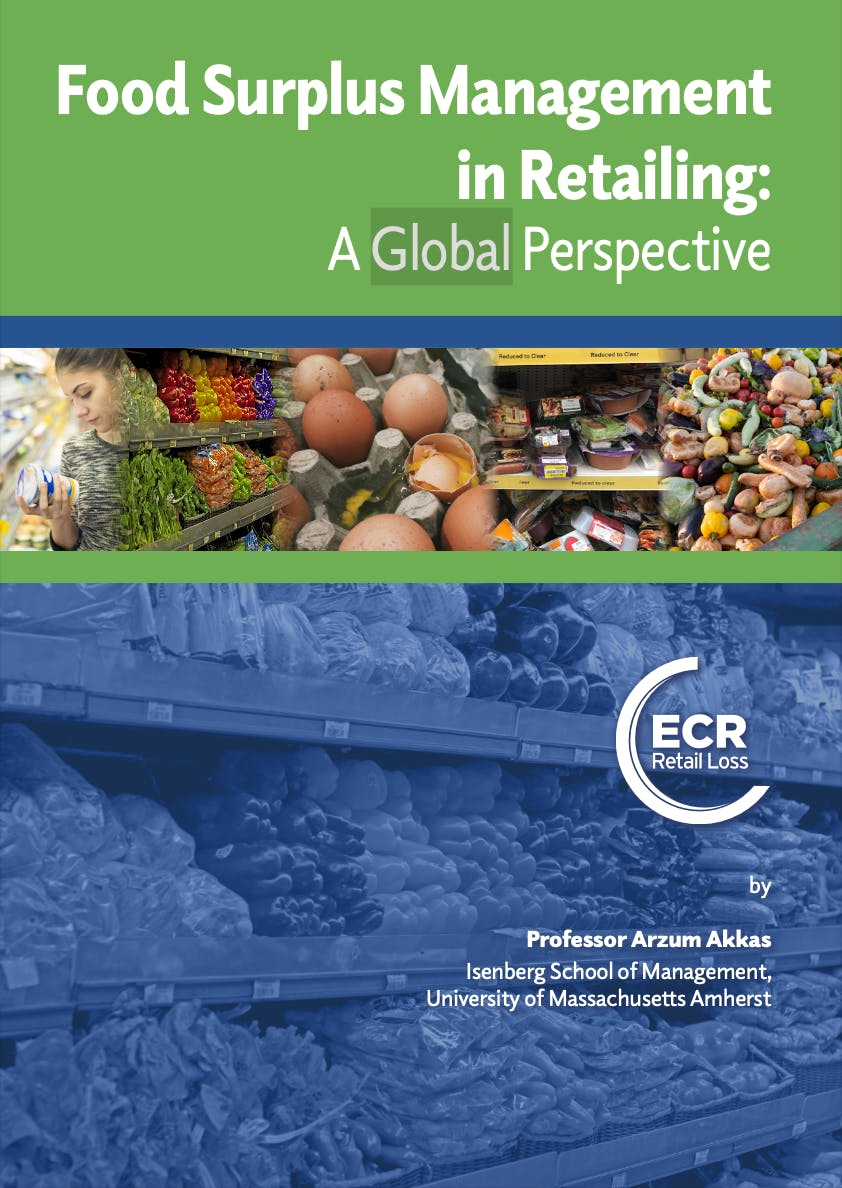New Research: Best Practices in Managing Food Surplus in Retail Stores
Categories:
Written by:
Professor Arzum Akkas
How are retailers managing food surplus?
The ECR Retail Loss Food Waste & Markdown working group launched this week a new report on the management of food surplus and unsold food.
This report explores innovative and established strategies to manage food surplus, including markdowns, donations, repurposing, recycling, and landfill disposal.
The report was authored by Prof. Arzum Akkas, an Associate Professor in Operations & Information Management at the Isenberg School of Management, University of Massachusetts Amherst. You can download the report by clicking here.
Navigating the Complexities of Food Waste Management
Addressing food waste management is a continuous challenge. With over 15 years of experience—from managing supply chain systems at PepsiCo to conducting research at MIT and beyond—Prof. Akkas brings a deep understanding of the complexities involved in tackling this issue.
The dynamics of food surplus management can shift due to market changes, new regulations, and evolving consumer expectations. As Prof. Akkas points out, achieving an advanced stage of food waste management doesn’t guarantee staying there without continuous effort.
At its core, managing food surplus is about dealing with the regrettable but inevitable reality that there will always be excess food to handle. Retailers must clear this surplus through a structured hierarchy of actions (e.g., markdown first, then donation, followed by animal feed, anaerobic digestion, and finally, landfill disposal). This hierarchy varies across retailers and even among different categories within the same retailer, making it a complex yet critical process.
The Maturity Model: A Roadmap for Improvement
Prof. Akkas’ research involved conversations with over 20 retailers and detailed analyses of their practices. These insights led to the development of a Maturity Model that categorizes retailers' approaches into three levels: developing, established, and leading. This model spans seven dimensions, each corresponding to a distinct avenue for managing food surplus, such as markdowns, donations to humans, anaerobic digestion, and landfill diversion. The seventh dimension—goals, incentives, and organizational structure—focuses on driving behaviour change.
"The Maturity Model helps retailers assess where they stand, set achievable goals, and create a roadmap for continuous improvement," she says. No retailer excels in all dimensions, but the model highlights areas for progress and innovation.
For example, in markdown strategies, advanced maturity requires continuous refinement. "Retailers can’t just say, 'We nailed this.' Managing food surplus is a journey of constant experimentation," Prof. Akkas adds. Different regions, product categories, and store types require tailored approaches, such as single-stage versus two-stage markdowns for specific categories like meat or produce.
Setting Realistic and Motivational Goals
One of the findings of the research is the importance of setting achievable goals. Retailers often aim to reduce food waste by half within a specific timeframe, aligning with government targets or the UN Sustainable Development Goals. Prof. Akkas emphasizes that goals should strike a balance between ambition and feasibility.
"If a goal is too strict and unmet, it can demoralize employees, disappoint stakeholders, and harm public trust. On the other hand, overly relaxed goals fail to push the organization toward its full potential," she notes. Incremental improvements become harder as retailers advance, which may require more aggressive efforts along the way.
The Role of Governments in Driving Change
One interesting insight from the research is how the costs and capabilities of anaerobic digestion vary significantly by region. In Massachusetts, for example, landfills are expected to reach capacity by 2030, and food waste constitutes a significant portion of landfill material. Prof. Akkas advocates for stronger government intervention to restrict food waste disposal in landfills and foster anaerobic digestion networks.
"Food waste bans create a win-win-win scenario for retailers, governments, and the public. They incentivize the formation of anaerobic digestion markets, generate clean energy, create new jobs, and reduce the burden on landfills," she explains. Building collection networks lowers transportation costs, making recycling more affordable for retailers.
Technology as a Game-Changer
Looking ahead, Prof. Akkas sees technology as a pivotal tool for advancing food waste management. AI and analytics can make labour-intensive tasks like date-checking perishables more efficient. Innovations such as two-dimensional barcodes, RFID, and dynamic pricing can streamline markdown processes and improve decision-making.
"I’m optimistic about the future of food surplus management because there is a strong business case for retailers. Reducing food waste directly saves costs, reduces compliance risk, boosts investor confidence, enhances public image, and protects brand reputation," she says. Consumers increasingly expect retailers to donate surplus food rather than sending it to landfills, pushing retailers to take socially responsible actions that are financially beneficial.
Conclusion
Food surplus management is a dynamic and complex challenge, but it also presents significant opportunities for innovation and improvement. Prof. Akkas’ research not only highlights best practices but also provides a practical framework for retailers to assess their performance and set achievable goals. By embracing continuous improvement and leveraging technology, retailers can turn food waste management into a strategic advantage.
Jan 16, 2025
Main office
ECR Community a.s.b.l
Upcoming Meetings
Join Our Mailing List
Subscribe© 2023 ECR Retails Loss. All Rights Reserved|Privacy Policy
